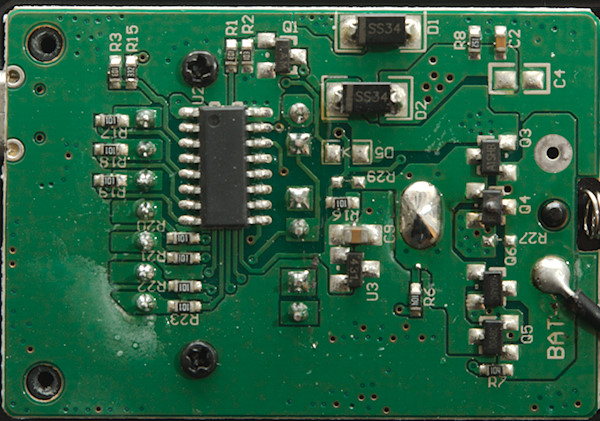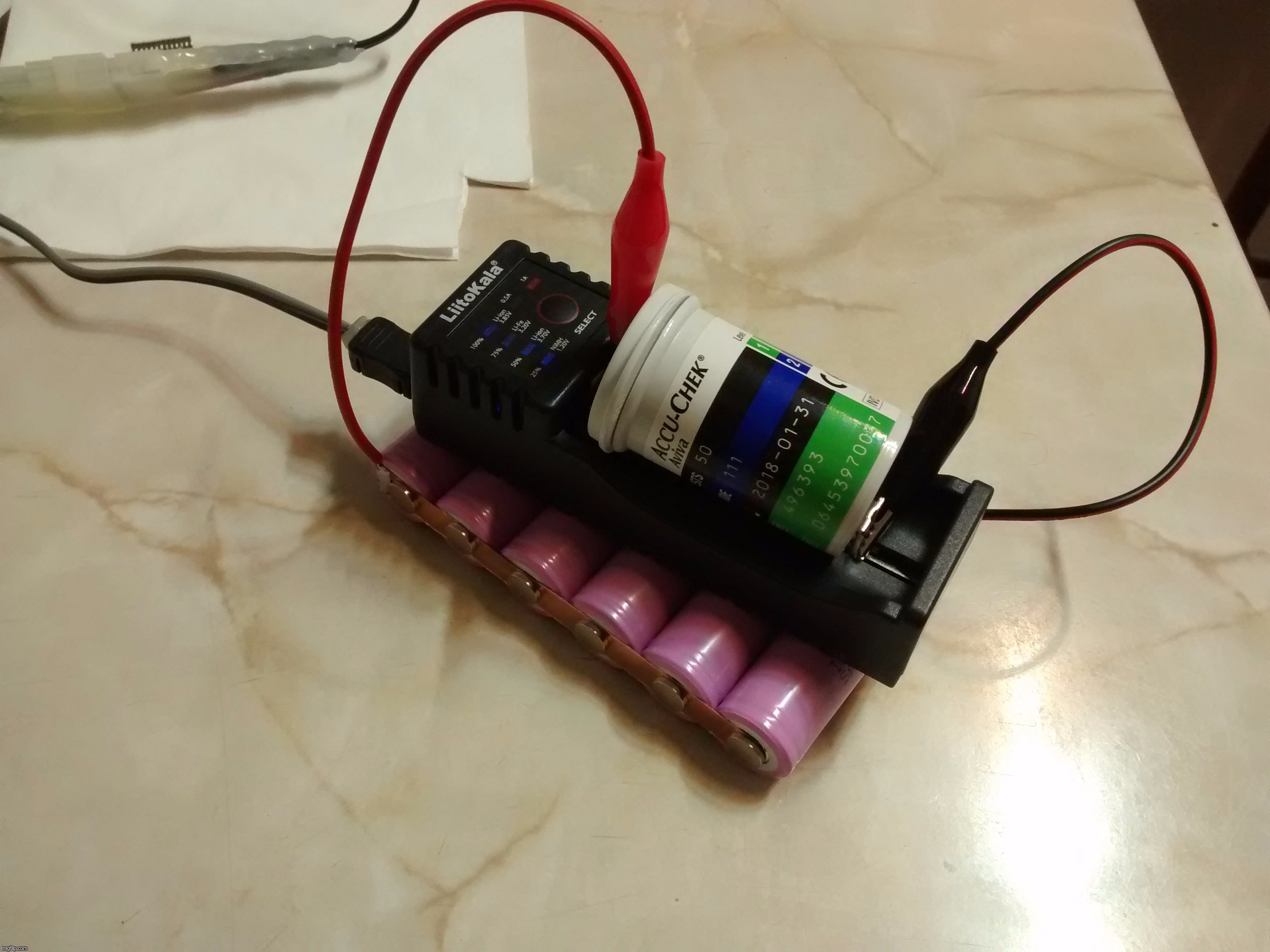LiitoKala Lii-S1

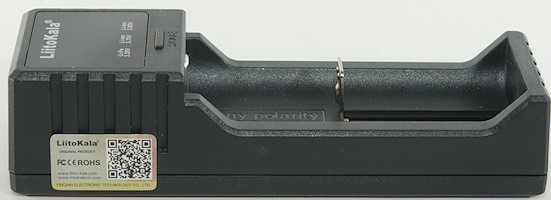

LiitoKala has made a couple of small usb chargers, this model adds a voltage display to the smallest model.
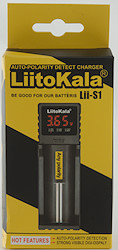

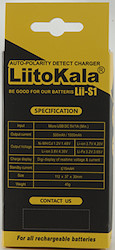

The charger arrived in a nice cardboard box with specifications on it.

The pack contained the charger, usb cable and a instruction sheet.
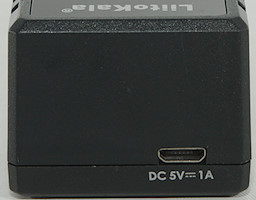
The charger is powered from micro usb.

The charger has a LED display and some leds together with a button for user interface.
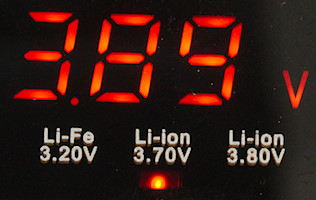
When putting a LiIon battery in the charger the 3.70V chemistry leds starts flash, presses on the button will change the selected chemistry.
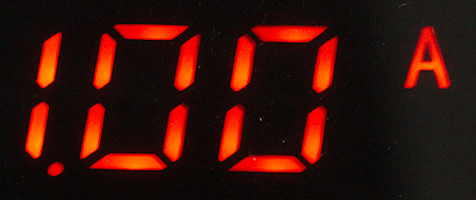
Holding the button down will change the current and show the new value.
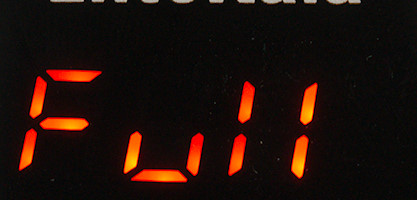
It is easy to see when the charger is done.
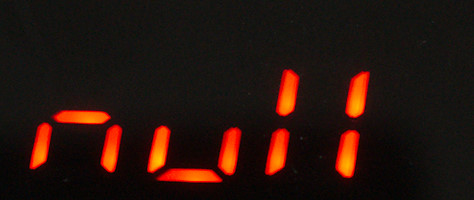
No battery in charger.
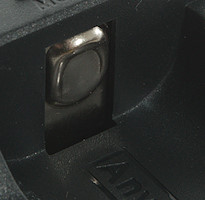
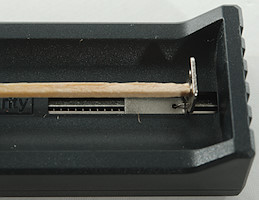
The charger uses the typical slider construction, it can handle batteries from 33mm to 70mm.











The charger can just about handle 70mm long batteries (The 21700 was very tight), inclusive flat top cells, this means most protected cells.
Measurements charger
-
LiIon and NiMH Batteries will be discharged with 0.1mA when power is off.
-
Default charger current is 0.5A
-
Voltmeter is within 0.02V, except at very low voltages.
-
Voltmeter will only update reading slowly and will never reduce the value.
-
Above 2 volt a battery is assumed to be LiIon.
-
Charger will not restart when battery voltage drops, but see below.
-
Charger will restart charging after power loss, or battery insertion.
Charging 4.20 volt LiIon
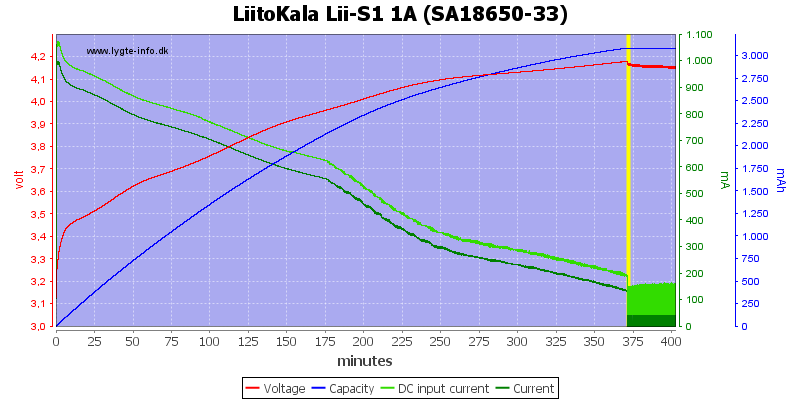
I wonder why the current drops from the start, maybe the charger is damaged again, the 1A reverse curve looks more normal.
The termination is a bit strange, there is some sort of trickle charge going on.

A fine CC/CV charge curve, There is also trickle charge here.
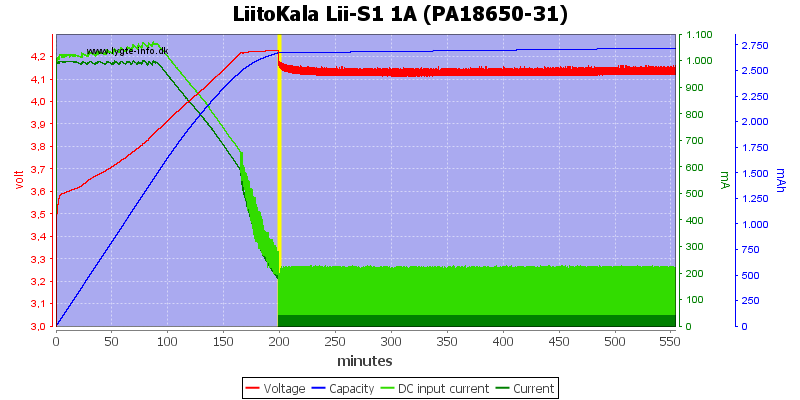
This older cell has more problems with termination. The current must be fairly low, because the cell voltage do not increase after the pulse.
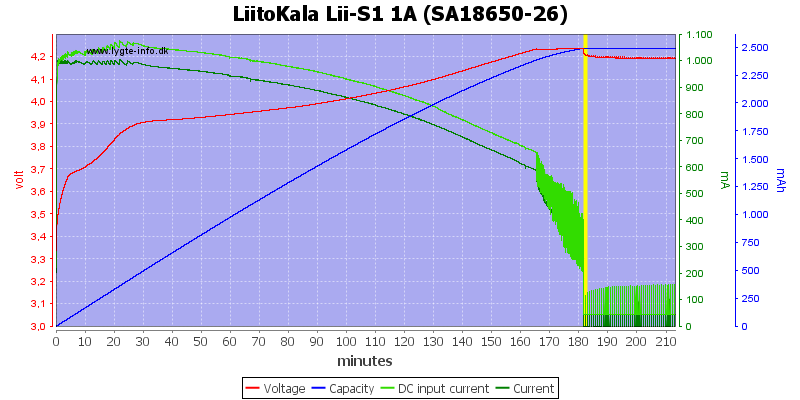
There is some instability problems in the internal regulation as can be seen from 165 to 180 minutes, this is not a problem for the charging.
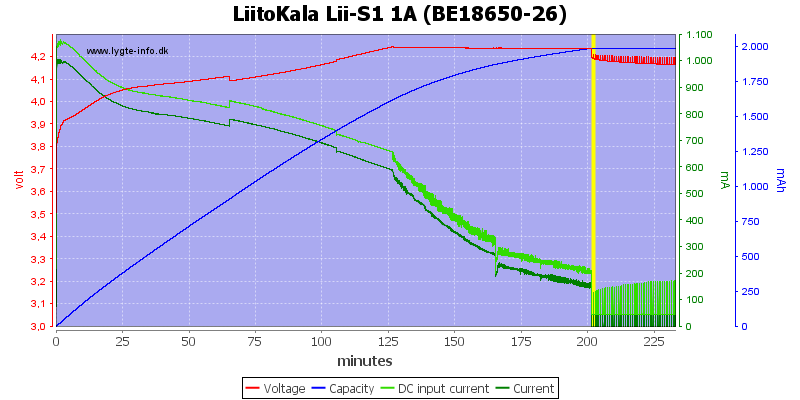
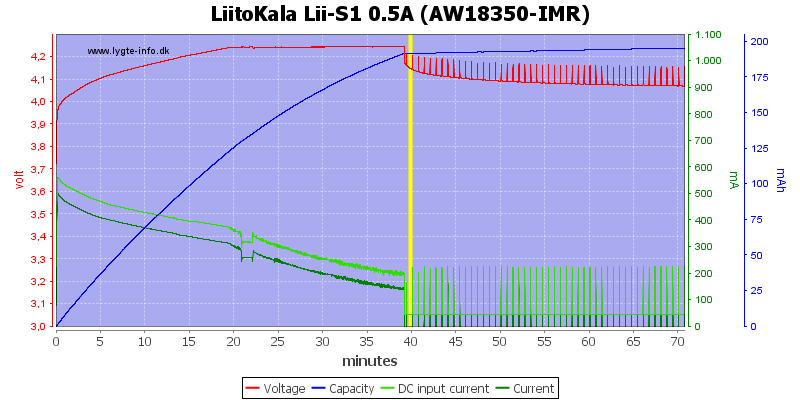
This very old cell drops significantly in voltage when charging terminates and this means lots of restarts.
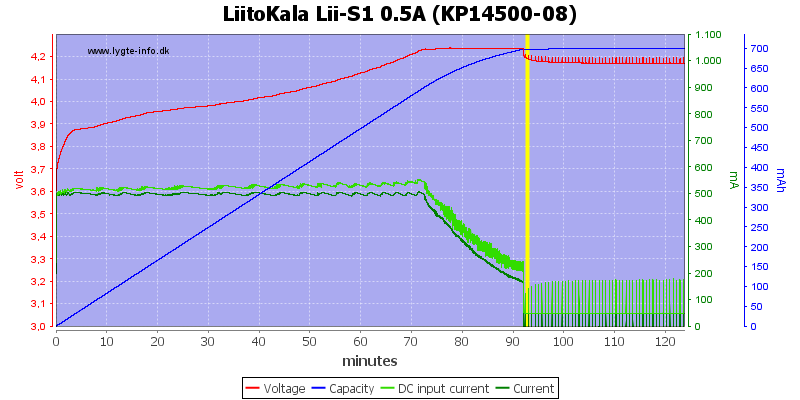
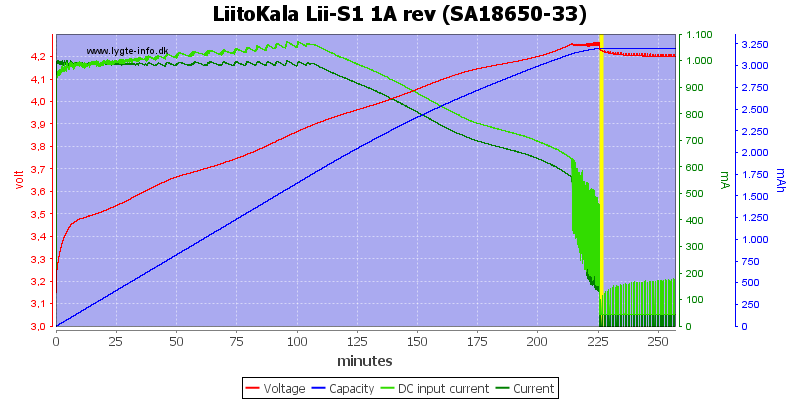
The charger can work with the cell either way around in the slot, here I charged it with + away from the display.

Adding a resistor in series with the usb power supply to simulate a long cable or weak supply did not prevent the charger from doing a good job, but it needed some more time.
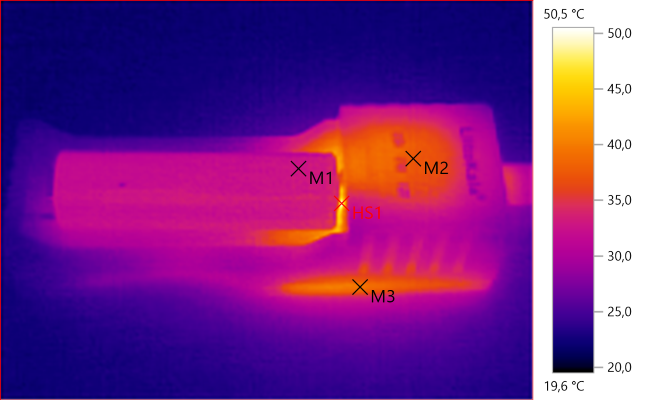
M1: 32.8°C, M2: 37.5°C, M3: 39.5°C, HS1: 50.5°C
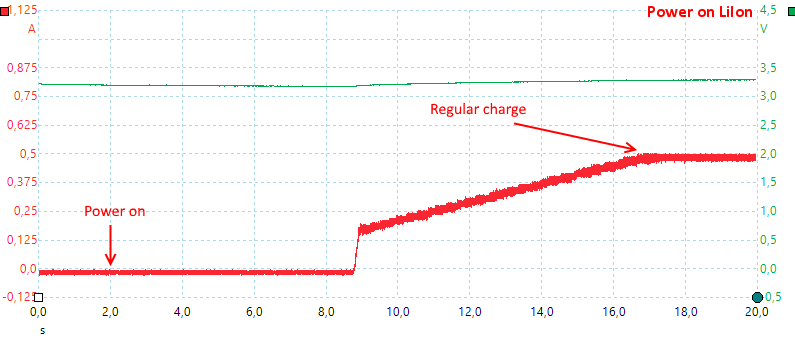
With LiIon cells the charger gives the user some time to select LiIon chemistry, before it slowly ramps the current up.
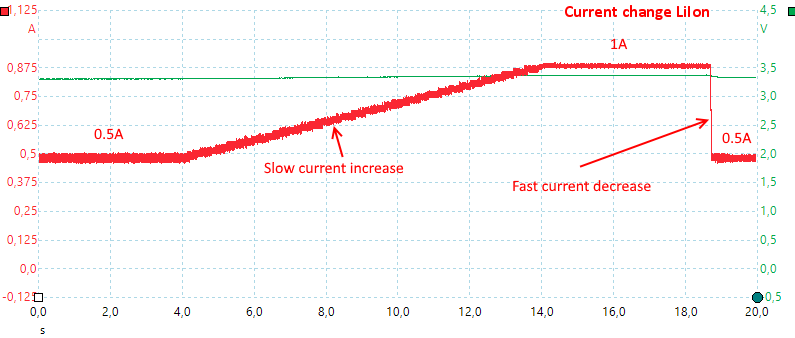
The slow ramp is also used when increasing current during charge, decreasing goes fast.
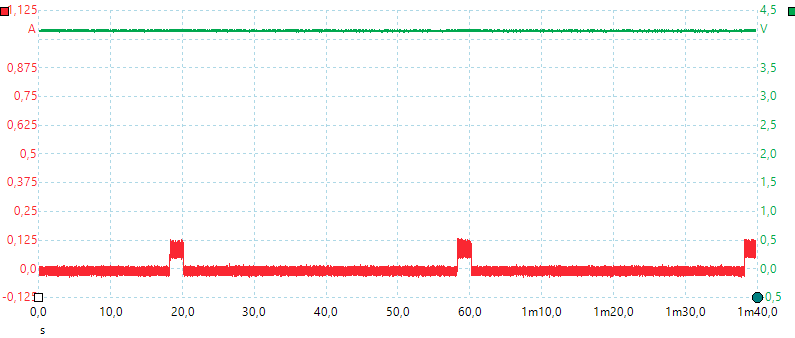
The “trickle charge”, I wonder why the charger do that. The actual current is only a few mA and will not do any damage if batteries are removed in a couple of hours after it is finished.
Charging 4.35 volt LiIon
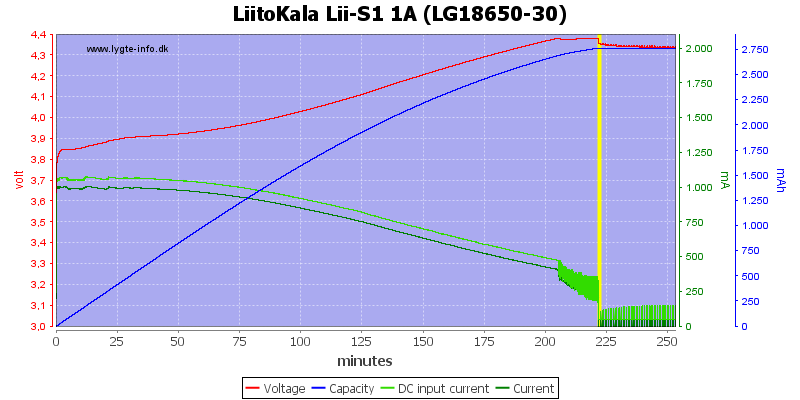
The 4.35 volt charge works as expected.
Charging 3.60 volt LiIon
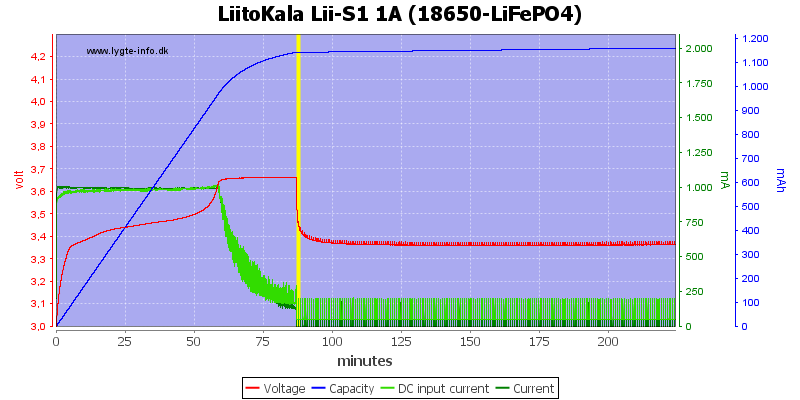

Both LiFePO4 cells is charged fine to 3.65 volt. Again the charger is pulsing, the actual pulse current is about 170mA for the 18650 cell, but only for a second or two. This is a sort of trickle charging.
Charging NiMH

The charger stops on voltage and will trickle charger with a low current. The termination looks to be slight premature.
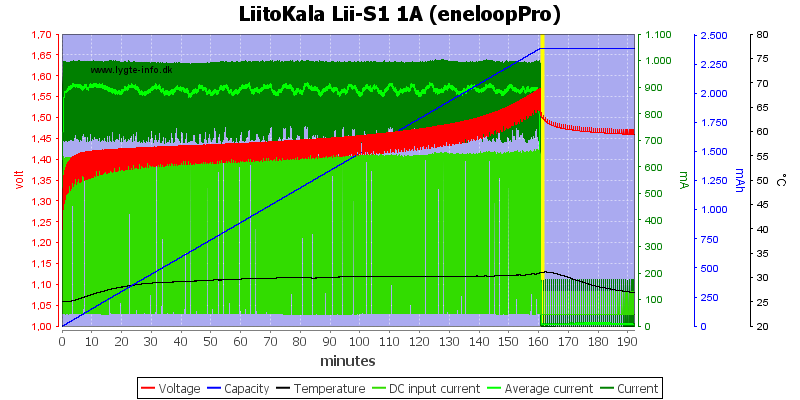
The Pro is also terminated on voltage, here the cell has started to warm up, i.e. it is full.
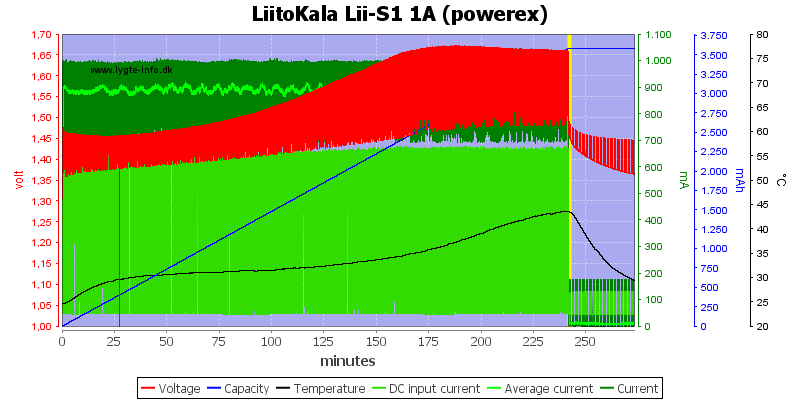
The powerex cell is worn down and the termination is a bit slow.
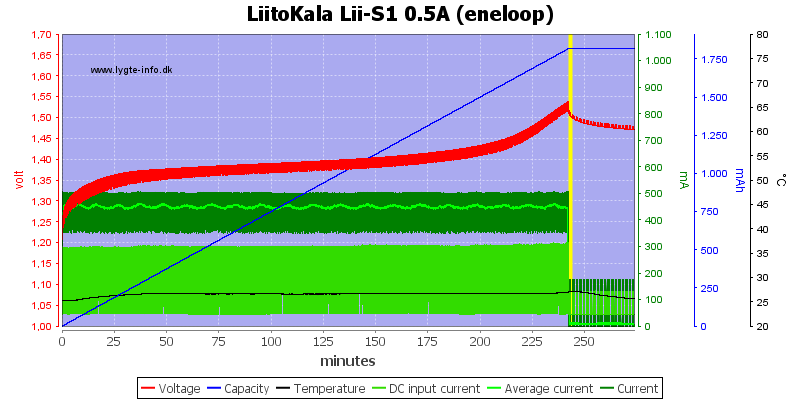
At 0.5A the voltage termination looks fine.

The AAA is again slightly premature in termination.
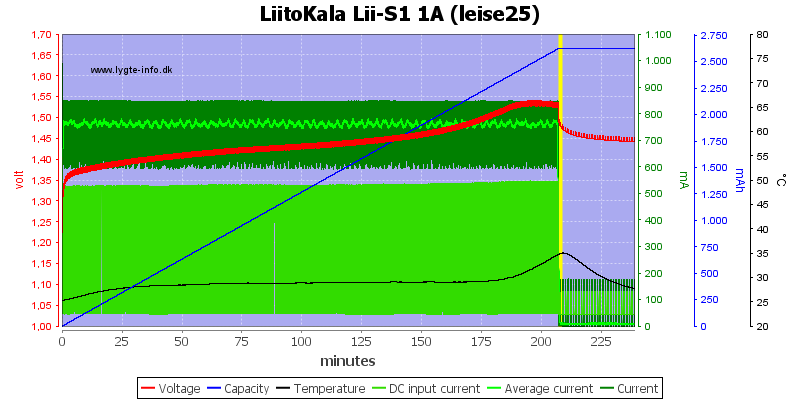
This Chinese cell is terminated perfectly on -dv/dt.
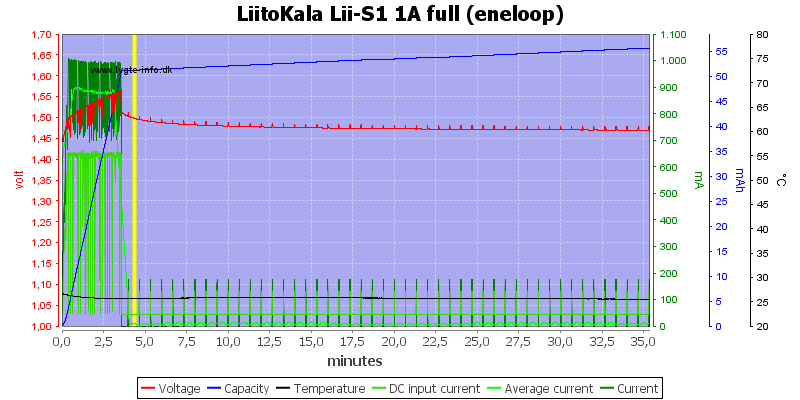
With voltage termination a full cell can be detected fast.
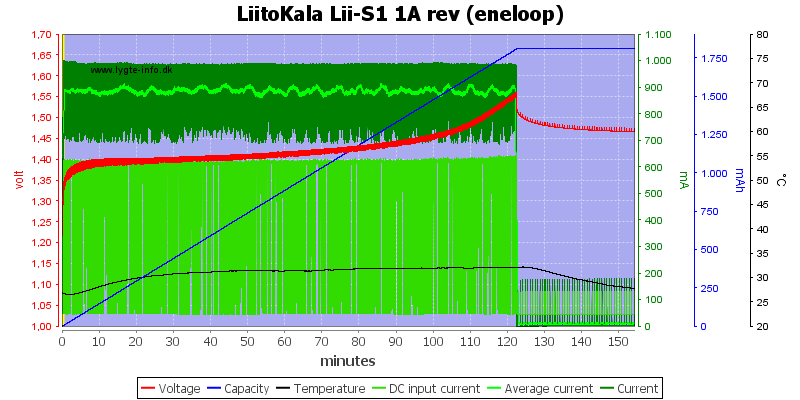
This cell was put in the charger the other way around , this is not a problem for the charger.
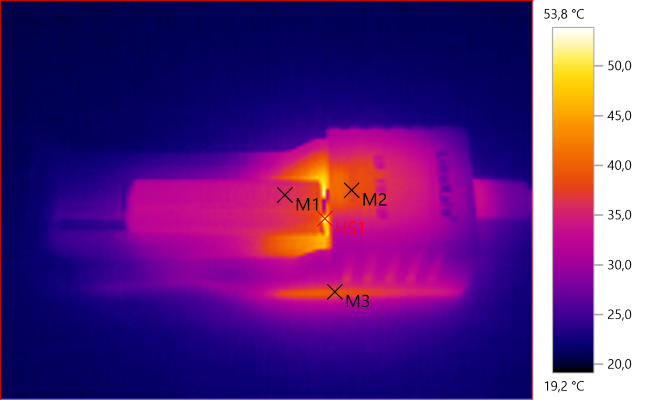
HS1: 53.8°C, M1: 35.8°C, M2: 38.3°C, M3: 39.0°C
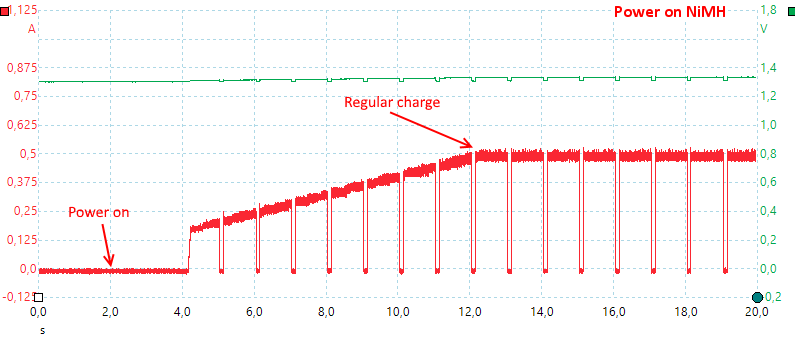
The charger starts faster with NiMH, but uses a slow ramp and measuring pulses.

Current change also uses the slow ramp when increasing current, but not when decreasing current.
Conclusion
I like the idea with a voltage display on a simple charger. The multi chemistry can also be useful and the two current means more battery sizes can be charger at a good rate.
The charger specifications says it can charger from 0V, but that is not really possible with reversible batteries, there is a risk batteries are charged backwards.
NiMH is the typical voltage termination and without any top-off charge, it means slightly undercharged batteries.
The trickle charge is low enough that it will not be a problem as long as the batteries are removed within a couple of hours.
I wonder how robust the charger is, I damaged one during some detailed test and \#2 may also be damage (See first curve).
I will rate the charger acceptable.
Notes
Here is an explanation on how I did the above charge curves: How do I test a charger
Read more about how I test USB power supplies/charger
